Pact of Culture [1931] As an artist, archeologist and history researcher, Nicholas Roerich most deeply experienced the tragedy of the destruction of cultural values, because just as it is impossible
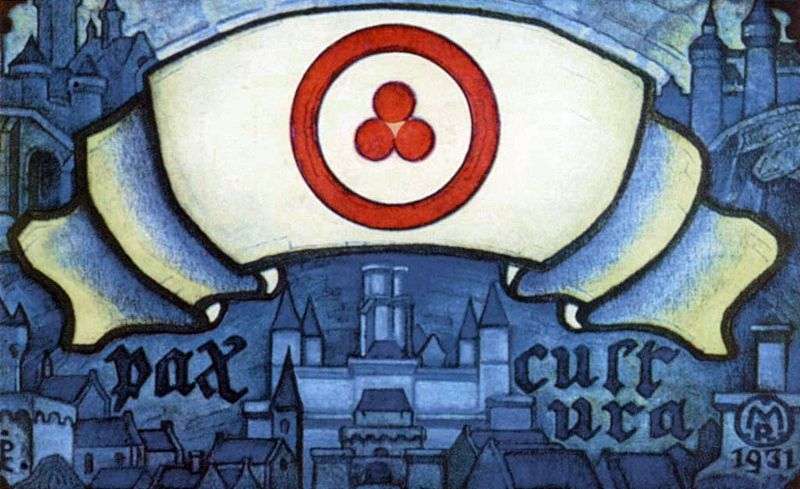

Pact of Culture [1931] As an artist, archeologist and history researcher, Nicholas Roerich most deeply experienced the tragedy of the destruction of cultural values, because just as it is impossible
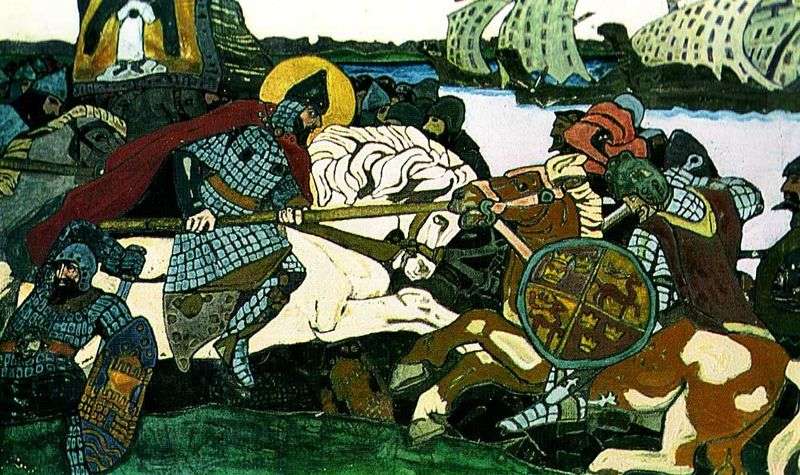
In 1240, the Swedes marched on Rus to the Neva by sea, and the Germans marched to Pskov by land. Alexander, Prince of Novgorod, acted quickly and decisively: not allowing
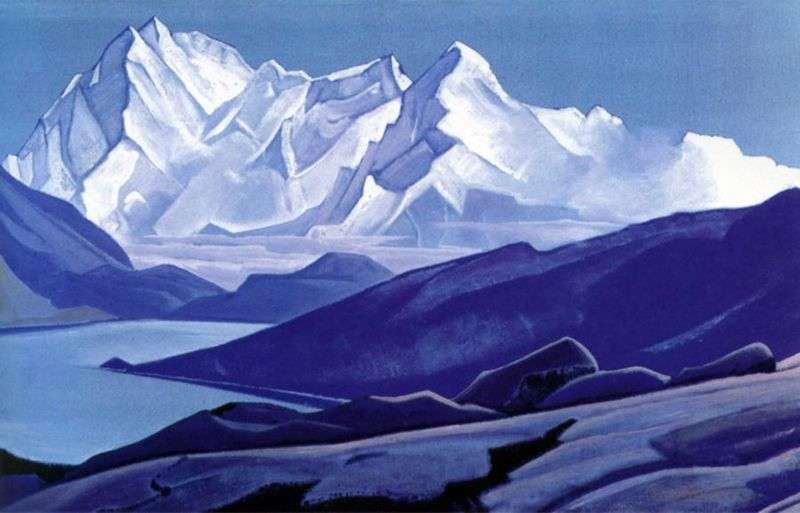
Above the clouds rise majestic peaks of the sacred Himalayas, ascend as a special transcendental country. The highest knowledge, the most inspirational songs, the most beautiful sounds and colors are
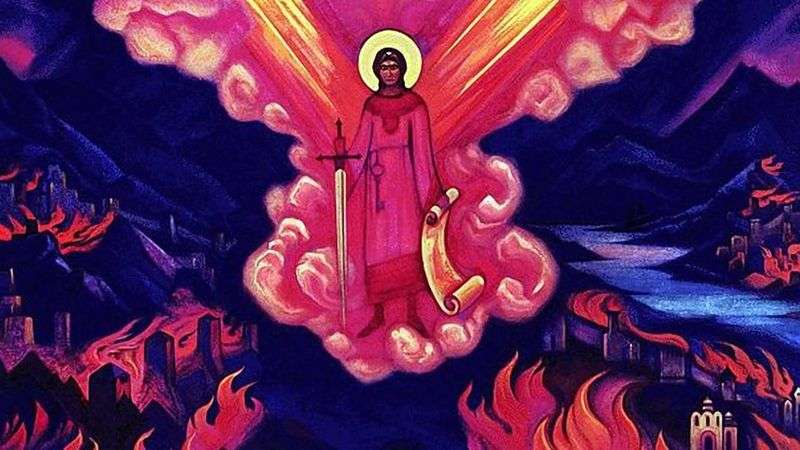
Nicholas Roerich felt his era as an era of radical historical change. In the art of Nikolai Konstantinovich before the war of 1914, the theme of retribution sounded with particular
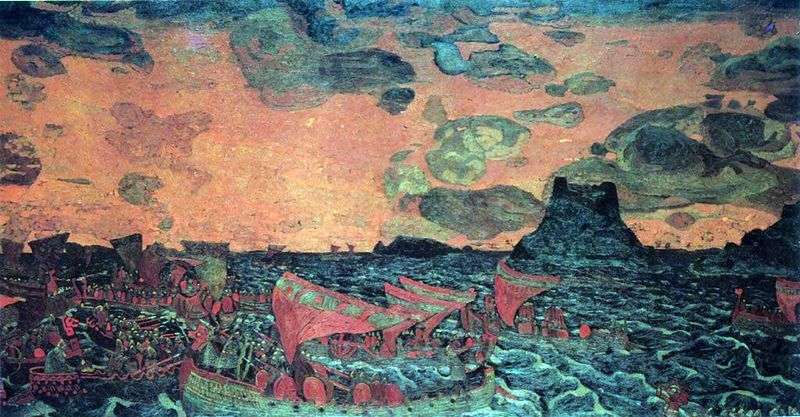
The canvas depicts fearless Scandinavian Vikings. They come together on the rooks, and the battle begins. Heavy ragged clouds float across the ominous copper-purple sky, as menacing as inaccessible coastal
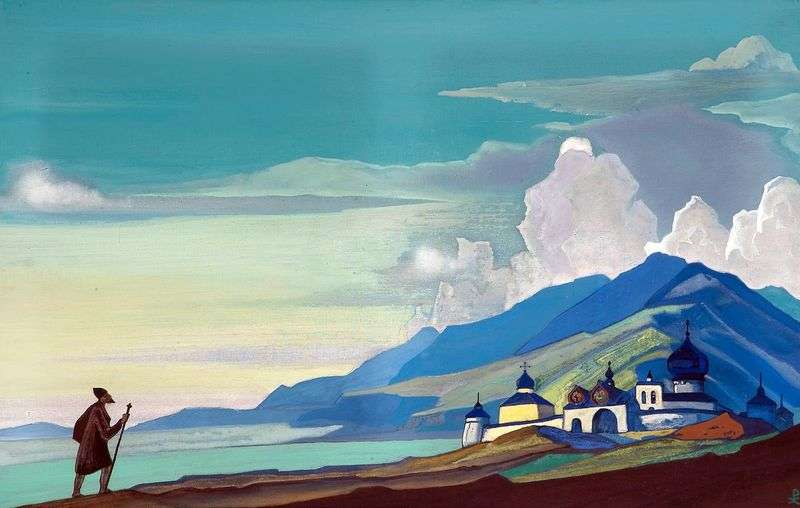
In the Museum of Nicholas Roerich in New York is stored a wonderful painting “Wanderer of the Light City”, written by the artist in the thirties of the twentieth century.
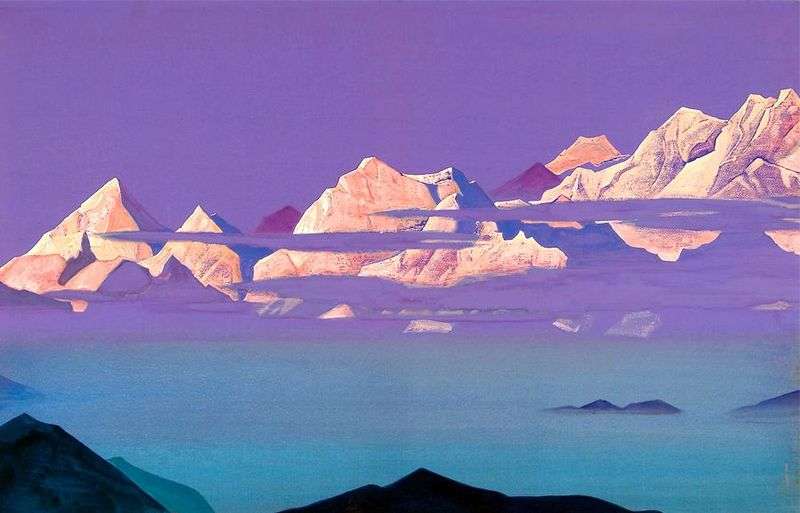
The painting “The Himalayas of the Pink Mountains” is the work of a mature master, the creator of heaven and mountain spaces. The mountain landscapes of Roerich, which depict the
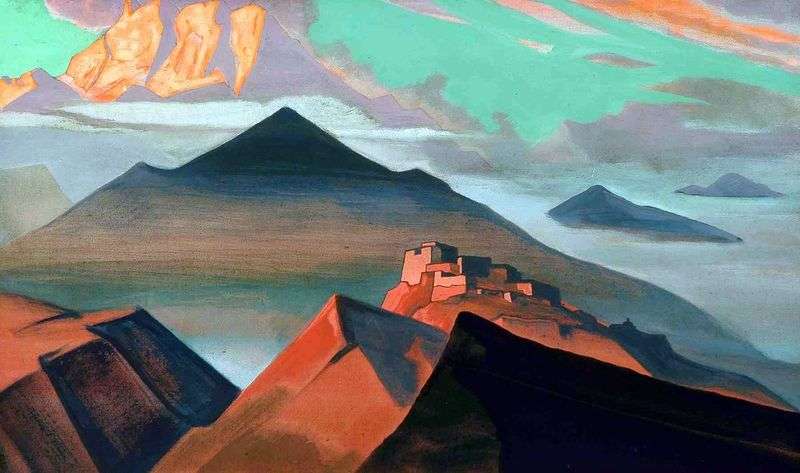
In 1933, Nicholas Roerich wrote an unusual and incredibly beautiful pictorial series “The Holy Mountains”. One of the works of this series is the picture “Shatrovaya mountain”. Like many of
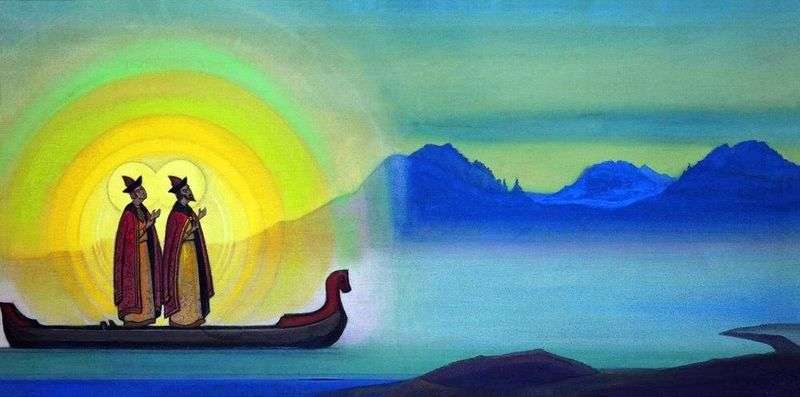
In the Life of Alexander Nevsky described his dream on the eve of the battle of Alexander with the Swedes in 1240. On the Neva River in the boat, the

The painting “Padma Sambgava” depicts one of the fathers of Buddhism in Tibet, the founder of the Nyingma school Padma Sambhava. For many centuries, his legendary acts were depicted by
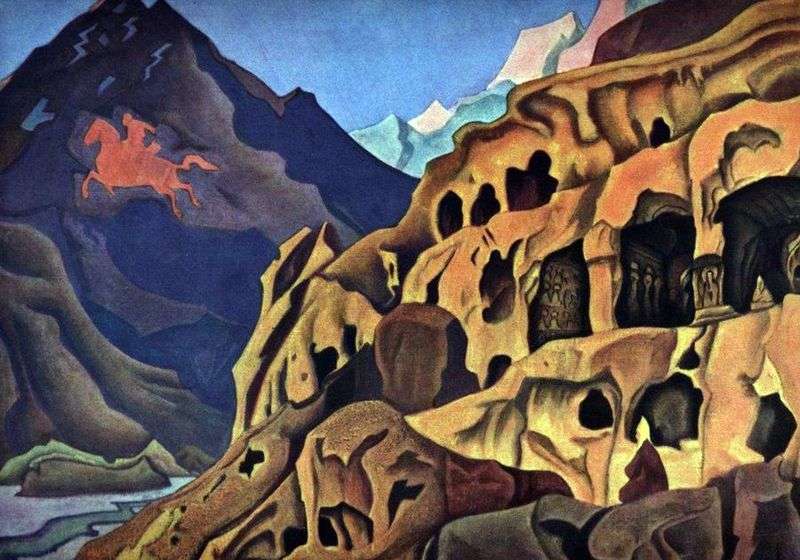
The Power of the Caves is one of the most emotional paintings of the Maitreya series. Diagonal composition, “running” the outline of a rocky massif, repeating the bend of the
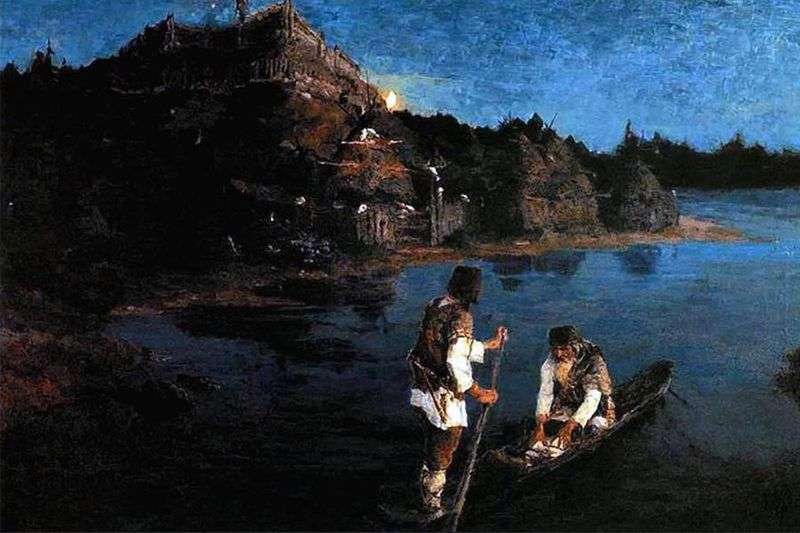
Painting “messenger”. On canvas, the artist writes a story so long that it does not even preserve reliable data about those times. Only echoes of the 9th century, scraps, small

“Glow” … The whole sky is filled with the crimson glow of the fires. At the medieval castle, in front of the fallen lion, stylized under the Belgian coat of
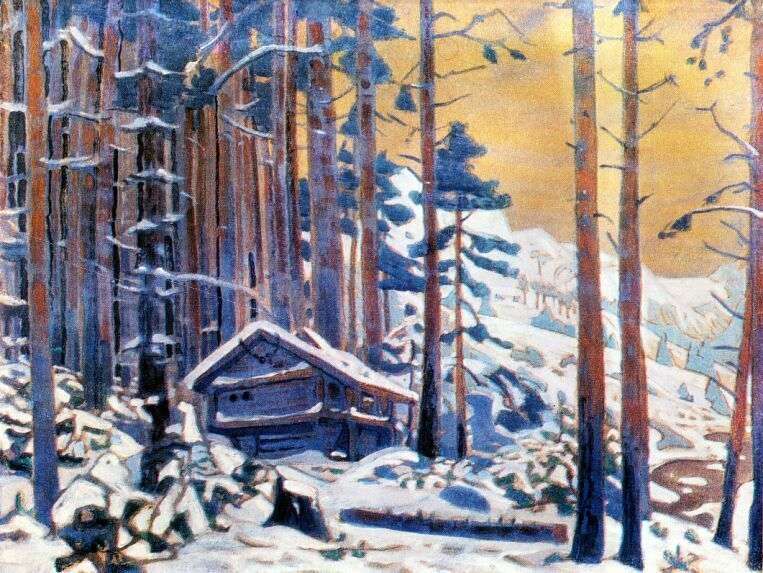
In 1912 Nicholas Roerich began work on the scenery and costumes for the production of “Peer Gynt” at the Moscow Art Theater. The dramatic poem of Ibsen the philosopher, combining
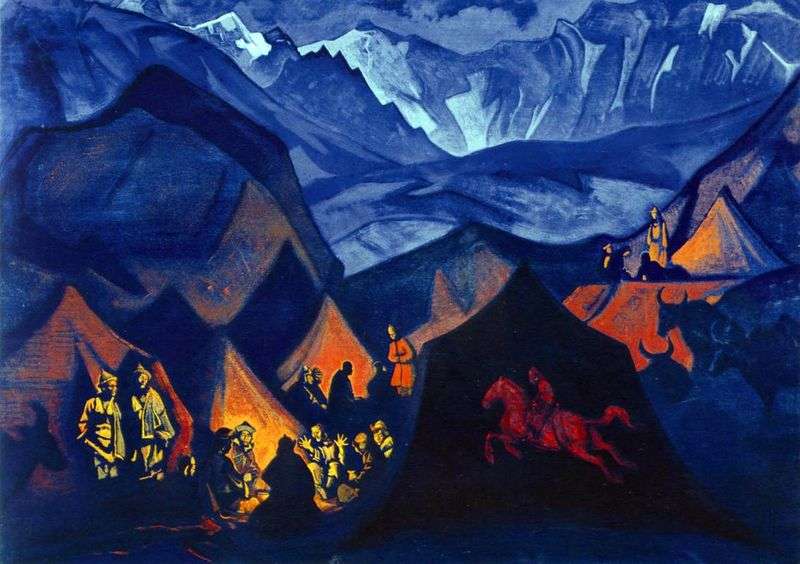
Honoring and waiting for Buddha Maitreya, but no longer “in secret caves”, but in friendly conversations among caravan drivers at the sites, is the theme of the “Whispers of the
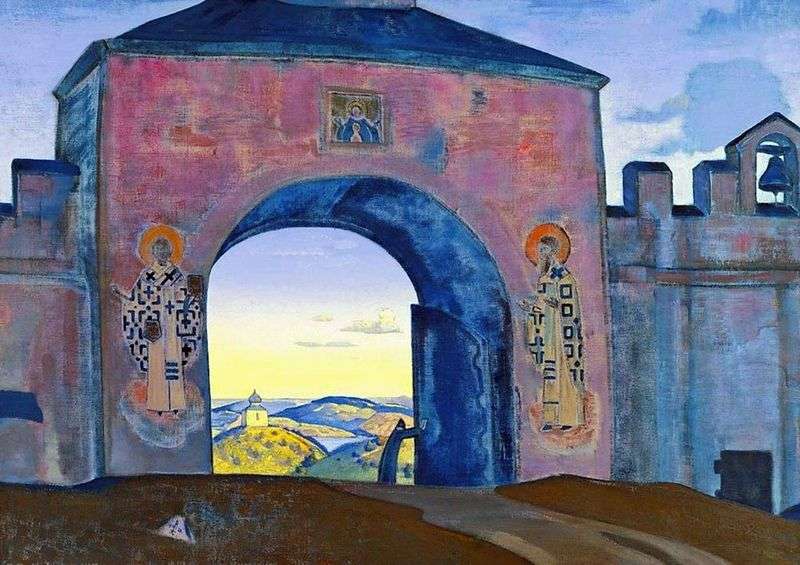
The series “Sancta” was written in 1922 during the artist’s stay in America. Translated, “Sancta” means “Saints,” but Nikolai Konstantinovich himself preferred the word “Ascetics.” The series includes the paintings
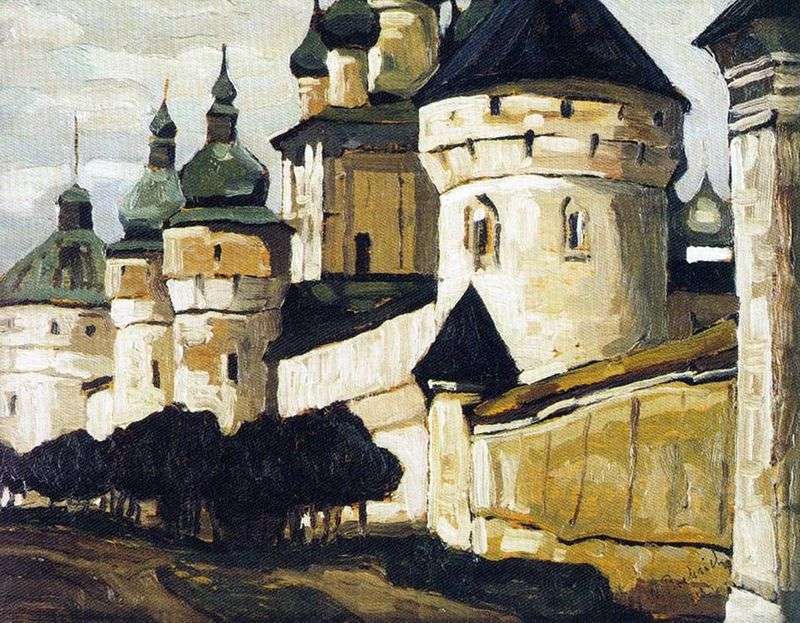
“Rostov the Great” … Part of the mighty ensemble of the Rostov Kremlin. Walls, towers, churches have firmly grown into the earth and merged with it, trees and sky. A

The painting “And we open the gates.” Here Nicholas Roerich addresses the topic of “spiritual openness”, which St. Sergius of Radonezh called for. We see a monk opening the arched

Painting “Confucius Fair”. Confucius – the ancient Chinese philosopher, thinker, teacher of life. In his comprehensive doctrine, he diligently resurrected lost traditions and linked customs, morality, politics, religion and other
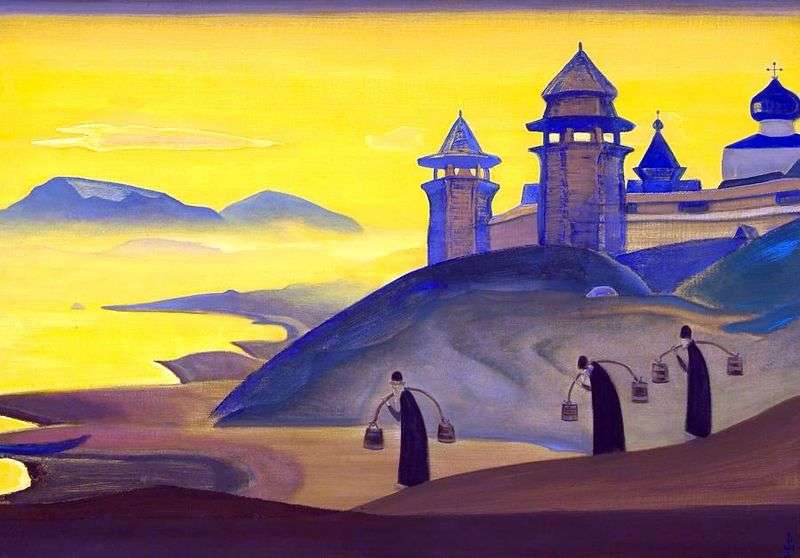
The painting “And we work.” Early in the morning, when the sky is flooded with golden sunlight, the monks with buckets on the yoke leave the monastery, which is located
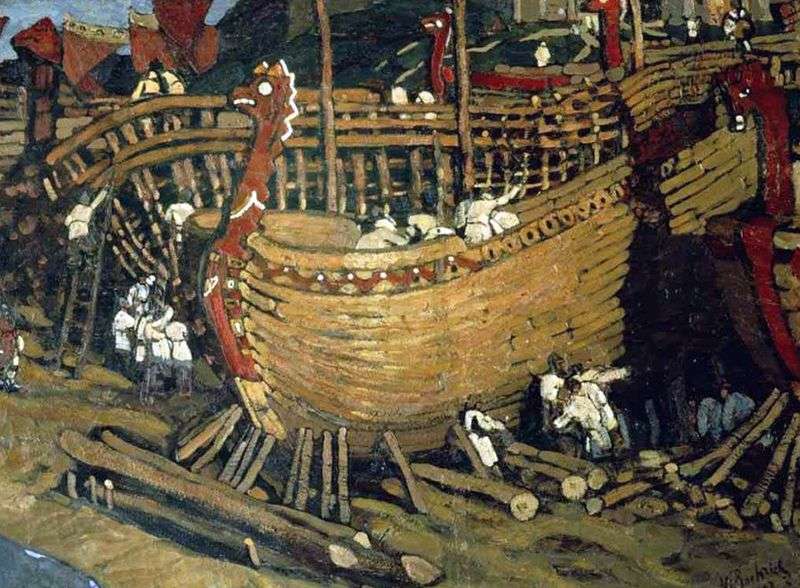
The painting “Build Rooks”, written in 1903, is part of the series “Beginning of Russia. Slavs”. In these works, Roerich showed a new, formerly little known to him world of